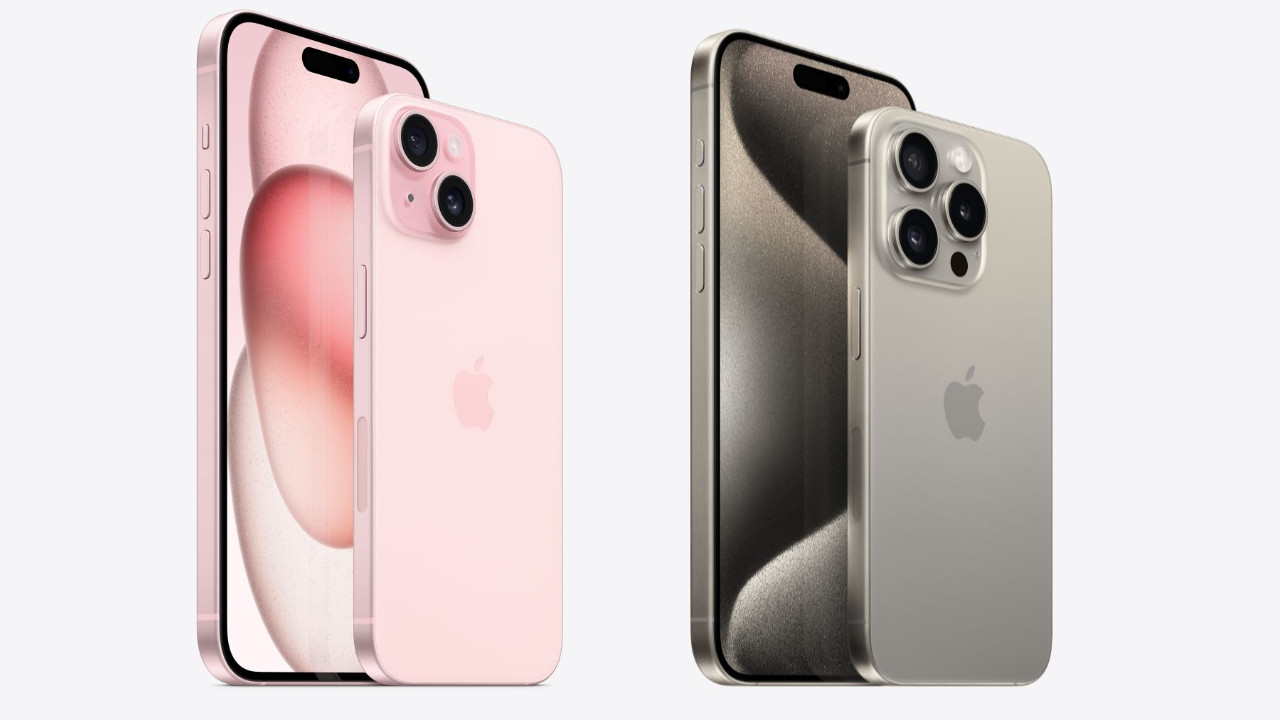[ad_1]

There was a time when iPhone buyers had only two questions to answer: which color and which storage option to choose. Now, things are much more complicated. Apple sells a number of iPhones at different budgets, and the latest iPhone 15 series now traditionally consists of four models: two “regular” iPhone 15s and two Pro models. If you’re wondering which model to choose or just want to compare the latest iPhones, here’s a full comparison between the iPhone 15, iPhone 15 Plus, iPhone 15 Pro and iPhone 15 Pro Max.
 |
 |
You may also want to check out our other Spec Appeal articles comparing the iPhone 15/15 Plus with their predecessors and the iPhone 15 Pro/Pro Max with the previous generation iPhone Pro models.
There are four main differences between the iPhone 15/15 Plus and the iPhone 15 Pro/Pro Max: materials, displays, processors and cameras. More affordable iPhone 15 models are made of aluminum, while their more expensive siblings offer polished grade 5 titanium. Apple says that replacing stainless steel in the iPhone 14 Pro with titanium allowed for a lighter chassis without compromising strength and durability. Also, the iPhone 15 Pro lineup includes a renewed case with an easier back glass replacement.

When talking about a case, you should also pay attention to the new action button in the iPhone 15 Pro series. It replaced the old one-time mute switch, giving users a customizable button to activate the camera, record notes, activate accessibility features, or activate shortcuts. The base iPhone 15 and iPhone 15 Plus still use the old mute switch.

Although all four iPhone 15 models now have the Dynamic Island in place of the old notch, there is still a noticeable difference between the screens. The iPhone 15 Pro and Pro Max support Pro Motion with refresh rates ranging from 1Hz to 120Hz. Another great feature of “pro-grade” iPhones is always on display. “Regular” iPhone 15s still use 60Hz displays without AOD, though their sizes, resolution and brightness match their more expensive siblings.
The iPhone 15 Pro and Pro Max are powered by a newer A17 Pro SoC that offers a 10% increase in CPU performance and a 20% improvement in GPU performance. In addition to raw horsepower, the new processor features a dedicated AV1 encoder, hardware-accelerated ray tracing for powerful gaming, and a USB 3.0 controller for faster data transfer via a USB-C port (other iPhone 15 models have a USB-C 2.0 port).

The last biggest difference between the iPhone 15/15 Plus and the iPhone 15 Pro/Pro Max is cameras. The Pro models have an additional 12MP telephoto camera with 3x optical zoom (or 5x on the iPhone 15 Pro Max). There’s also second-generation optical image stabilization for sensor shift, macro/video photography, night mode portraits, and Apple ProRAW support.
The iPhone 15 Pro and Pro Max are also better at video recording: you can record ProRes video at up to 4K 60 fps with support for an external recorder. There is also log and ACES support.

Here are the main differences between the iPhone 15 Pro/Pro Max and the iPhone 15/15 Plus summarized in a list:
- Difference in chassis materials: titanium in Peru and aluminum in normal models.
- A new and better processor.
- Faster screens with optimized refresh rate and always-on display support.
- Better cameras with dedicated telephoto camera and LiDAR sensor.
- 1TB storage option.
- Wi-Fi 6E and dual-frequency GPS support.
- USB-C 3.0 instead of the slower USB-C 2.0.
- Longer battery life.

Now here’s a more detailed comparison of specs:
| iPhone 15 | iPhone 15 Plus | iPhone 15 Pro | iPhone 15 Pro Max | |
|---|---|---|---|---|
| display |
6.1 inch 2556×1179 |
6.7 inch 2796×1290 Peak brightness of 2000 nits 60 Hz dynamic island |
6.1 inch |
6.7 inch 2796×1290 Peak brightness of 2000 nits 1-120 Hz dynamic island Always on display |
| Processor |
6 A16 Bionic cores |
6 cores A17 Bionic GPU 6 cores 16-core neural engine |
||
| RAM | TBD | 8GB | ||
| storage | ||||
| Main cameras |
48MP Wide + 12MP extra wide Aperture f/1.6 + f/2.4 OIS for sensor shift |
48MP wide + 12MP extra wide + 12MP telephoto + LiDAR Aperture f/1.78 + f/2.2 + f/2.8 2nd generation sensor-shift OIS |
||
| front camera |
12MP f/1.9 aperture Photonic engine 4K video recording up to 60 frames per second |
12MP f/1.9 aperture Photonic engine 4K video recording up to 60 frames per second |
||
| video recording |
Video recording up to 4K at a speed of up to 60 frames per second |
Video recording up to 4K at a speed of up to 60 frames per second ProRes video recording up to 4K at 60 frames per second with external recording |
||
| Connectivity |
GSM/EDGE/UMTS/HSPA+ |
GSM/EDGE/UMTS/HSPA+ Wi-Fi 6E |
||
| SIM |
No physical sim |
|||
| battery |
TBD mAh |
TBD mAh 26 hours of video playback |
TBD mAh 23 hours of video playback |
TBD mAh 29 hours of video playback |
| ports and charging |
USB-C 2.0, MagSafe and Qi2 |
USB-C 3.0 (10Gb/s)MagSafe and Qi2 Charge up to 50% in 30 minutes with a 20W adapter. |
||
| chassis |
aluminum |
Grade 5 titanium Natural titanium, blue titanium, white titanium, black titanium Action button |
||
| price |
799 dollars |
899 dollars | 999 dollars | 1199 dollars |
The iPhone 15 series will be available for pre-order On Apple’s official website on September 15, 2023, with availability starting on September 22, 2023.
Are you buying one of the new iPhone 15s? Do you go for pro or regular? Tell us in the comments.
[ad_2]